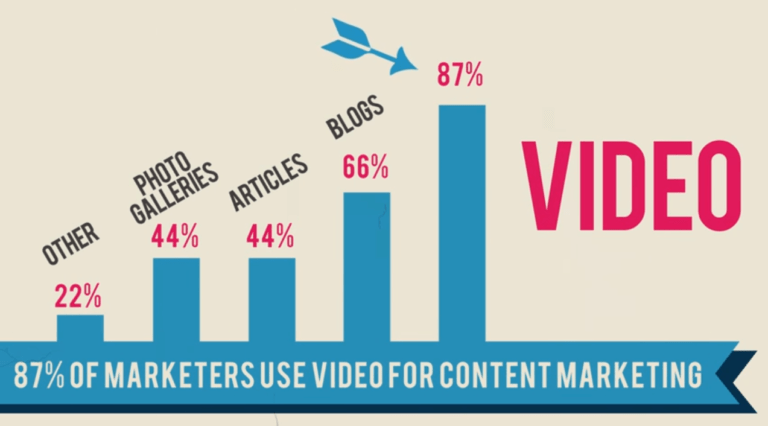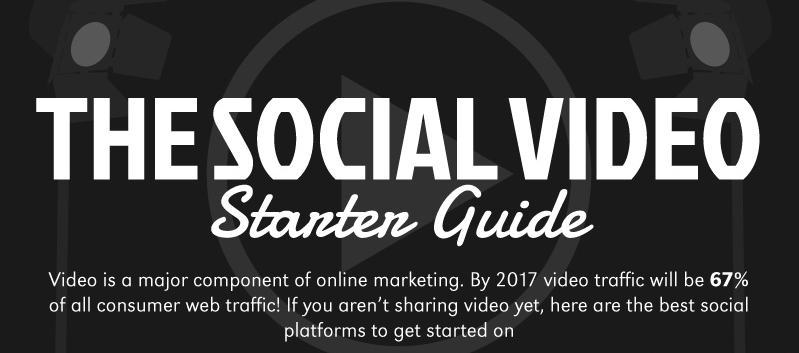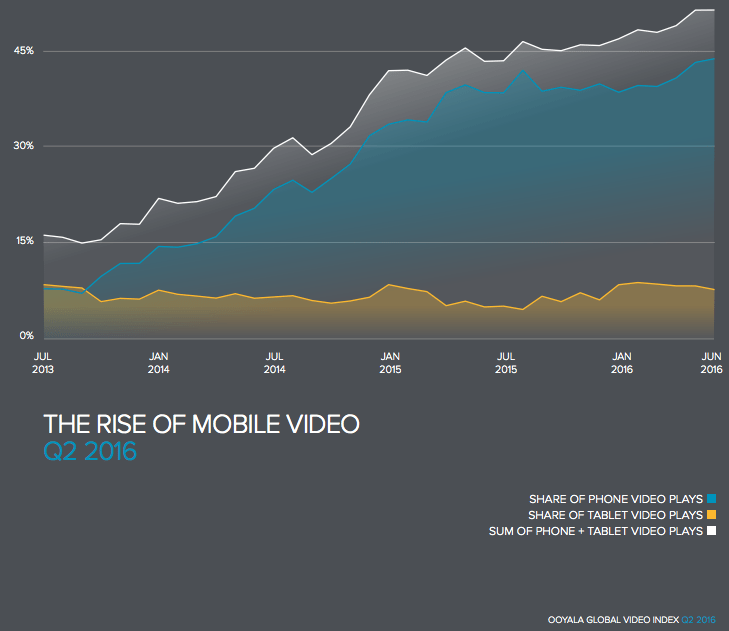Video marketing is one of the best marketing methods out there, one that serves a variety of purposes and grows in importance every year. Today, we discuss the truth about video marketing strategy and show you how it contributes to business growth and improving market performance.

Image courtesy of Zagfirst
Why you need a great video marketing strategy
As shown in the image above, more content marketers use video marketing than any other content type. Content marketers don’t pick video marketing because it’s easy to create, as a good marketing video takes 4-6 weeks from idea to final product. They use a video marketing strategy because it is effective.
Don’t believe me? Check out the results below. According to a recent survey conducted by Wyzowl:
- 89% of video marketers say video gives them a good ROI.
- 83% of video marketers say video helps them with lead generation.
- 87% of video marketers say video has increased traffic to their website.
- 80% of video marketers say video has directly helped increase sales.
- 95% of video marketers plan to increase or maintain video spend in 2020.
5 Tips for building a video marketing strategy that drives performance
1. Designing a strategy
The initial step to achieving success is to create a video marketing strategy, just like any other marketing approach. Making videos can be costly, and poor planning raises the risk of wasting money and missing your targets. Therefore, the first part of the strategy is to set clear goals for your video marketing campaign.
Beyond that, you must set a budget for your video marketing strategy, as it is so easy to overspend if you are not careful. Hiring an outside agency isn’t always possible as even a small agency costs big bucks. If you try to go it alone, here is a list of what you’ll need to get you started.
- A storyboard, which outlines the video. Often, a storyboard is drawn out like a cartoon with frames and word bubbles over crudely drawn characters.
- A script. After you have an approved storyboard, you must write a script to guide the video.
- Lighting. Nothing says amateur like a badly lit scene. However, the cost of good lighting doesn’t have to break the bank as you can use ring lights and other inexpensive lighting options.
- A camera. While a good video camera used to cost thousands of dollars, today’s iPhones now take a quite acceptable video. If you don’t own an iPhone, there are iPhone rental options available.
- Sound. Directional mikes are a must as they pick up the audio while reducing contamination by extraneous sounds.
- Editing software. If you have the time to learn, Adobe offers an excellent piece of editing software, Premiere Pro, that meets the needs of even studio-quality video. Often the difference between a good video and a great one is the quality of the editing.
- Specialized equipment such as lightboxes, a tripod to stabilize the camera, green screens, etc.
- Actors or other people to bring your video to life. Ensure your actors represent your target audience and are unlikely to engage in behavior that embarrassed your brand on social media or other outlets.
With all the equipment together and a good script, you’re now ready to start videography.
2. Know your audience
Many of the old tricks and tips surrounding marketing, in general, still apply when you build your video marketing strategy. For instance, you still need to ensure that you know your market as well as possible, as knowing your target market helps you craft messages that resonate with them, choose actors that represent them (people like to see that a product is “for them”), you choose locations without negative connotations (I once saw a video fail because the car used in the video had a German license plate for a French company), and videos address their problems. For instance, explainer videos are a common element in video marketing strategy. But, talking down to your target audience by explaining things commonly understood or assuming too much knowledge leads to failure.
As long as you match your video to your target audience, you’ll find people who want to share your videos more, they relate to them better, and viewers are more likely to actually convert into sales.
Image courtesy of Wordstream
3. Use a story
One of the reasons video is so compelling is because it tells a story, and these stories create emotions that attract consumers to your content. Viewers find a well-crafted story draws them in and builds engagement with the characters that often translates well to engagement with the brand. That’s nothing new. TV advertising (and even programming) demonstrated the power of video for driving purchases since the creation of the first soap opera.
If you use a story in your video marketing, ensure it is powerful and emotional, with sympathetic characters viewers identify with. This is the kind of thing that really appeals to people, and achieving a high return is common when employing this strategy. Whatever videos you produce, focus on the emotional side of things as much as you can as you weave your story.
Having a story to tell means that people are more likely to listen and remember.
4. Market your video
Remember the overall goal of your video marketing strategy is to support your marketing efforts, not create an award-winning video. Continue your branding by wrapping your video inside a digital donut with an introduction containing your logo, color scheme, and iconography similar to those used throughout your marketing. Close the donut with a strong CTA (call to action) that clearly states what action the viewer should take after watching the video, whether that’s subscribing to your YouTube channel, visiting your website, calling to make an appointment, or whatever. NEVER close the video without making a strong CTA. You might even repeat your logo and other images to reinforce your brand.
Similarly, uploading the video to YouTube and/or embedding it on your website requires careful attention to SEO by employing a video transcription (if desired), a description that uses your keywords, and a headline, also using keywords. Ensure you make your video easy to share, if you embed it on your website, while YouTube takes care of this task for you.
5. The secret to going viral
Let’s be honest. The outcome most people want for their video marketing strategy is to go viral — in other words reaching large numbers through transmission by viewers. Maybe, you want to be the next internet sensation or you just want to increase your reach among your target audience.
But going viral is as much an act of fortune as fortitude, and you must work hard to market your video just as you would any other piece of content. You may well go viral, but your videos might also go basically unnoticed, as well. You can’t really predict what will happen in either case, so you need to just prepare for either option. A good measurement strategy helps optimize your video marketing strategy so you get better at creating videos with appeal as you go on.
That being said, if you want to go viral, glom onto popular trends and highly search keywords. One is to ensure that there is something unexpected, entertaining, or useful in your video, which forms the basis for hints in your video descriptions and tweets and so on. And if there is an emotional story involved, you are much more likely to make the video go viral, too.
Conclusion
Video marketing strategy is a great way to support your business success but, of all the content strategies, it has the highest cost and, potentially the greatest risk. So, spend time crafting a sound video marketing strategy using the tips shared here.
Meanwhile, if you have comments, questions, or would like to share ideas for future posts, feel free to enter them in the comments below.

